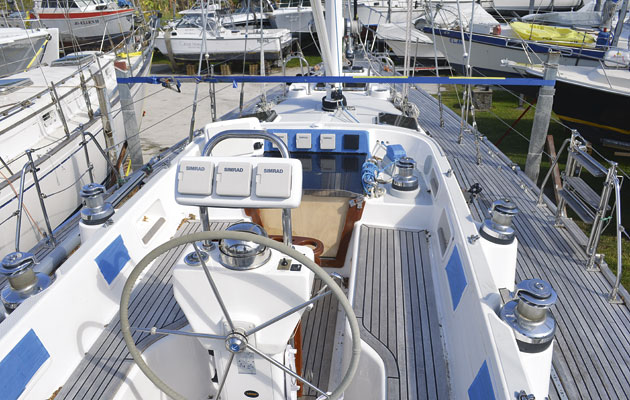Having analysed several case studies from Cyclone Pam in Vanuatu, Tom Partridge identifies 20 key techniques for surviving strong winds
20 tips for surviving strong winds
All boats
- Remove sails, sprayhood, bimini and lines
- Take down wind generators, solar panels and stow liferafts
- Reduce windage as much as possible and leave no loose items on deck
- Ensure water and fuel tanks are full as demand will be great after the cyclone
- Remove and stow your tender, or take it ashore when you leave the boat
- Talk to your insurer, prepare as advised and take photos of your preparation
- Once fully prepared, leave the boat. It is not safe to stay aboard in very high winds and the urge to protect her could prove fatal. Boats can be replaced, but people can’t
Boats in a boatyard
- Double sets of chains and buckles should be used to secure cradle arms
- Run forward and aft cargo straps from cleats to the cradle
- Use cargo straps across the deck to secure to cradle arms
- Use Acro props against the hull
- Reinforce with timber supports
Boats on a mooring
- Use thick lines that can provide strength and elasticity. You will need both
- Use thick anti-chafe tubes on lines where they come aboard
- Tie on with as many lines as you can and ensure there is contingency in place for each line that could break
- Double-check all lines, chains and shackles and ensure they are up to the job
- Talk to your neighbours, particularly those upwind, about their preparation
Boats in a marina
- Marina preparations are unique to each marina. Ensure you understand them well in advance and have the correct equipment ready
- Secure fenders by tying lines beneath the boat to prevent them popping out
- Ensure any water and electrical connections are removed







